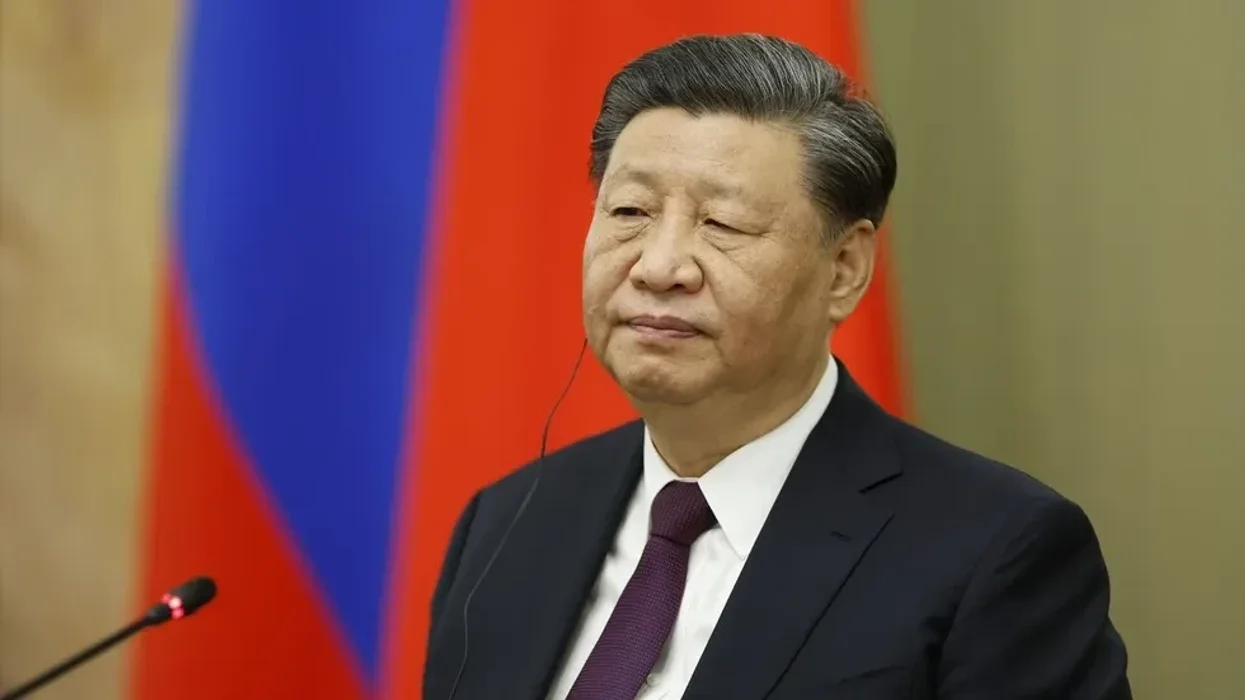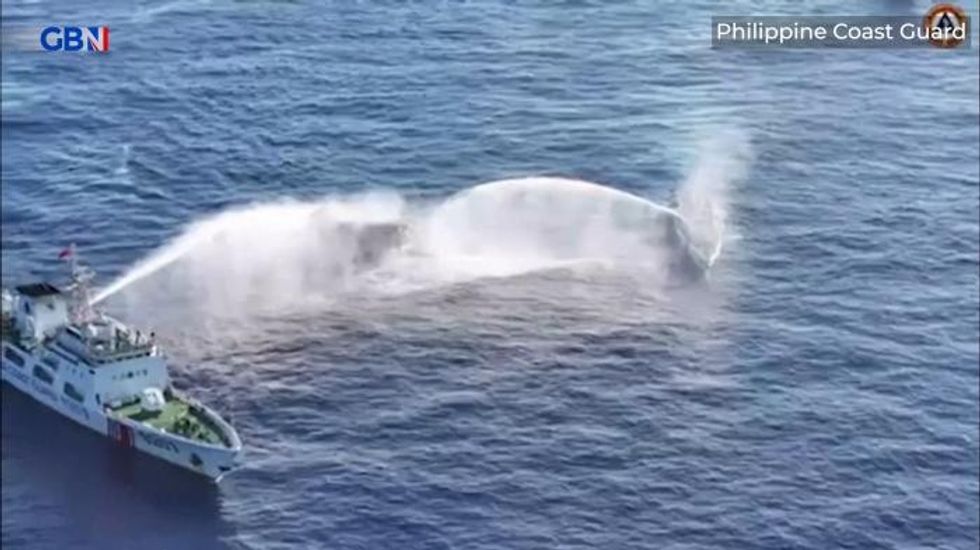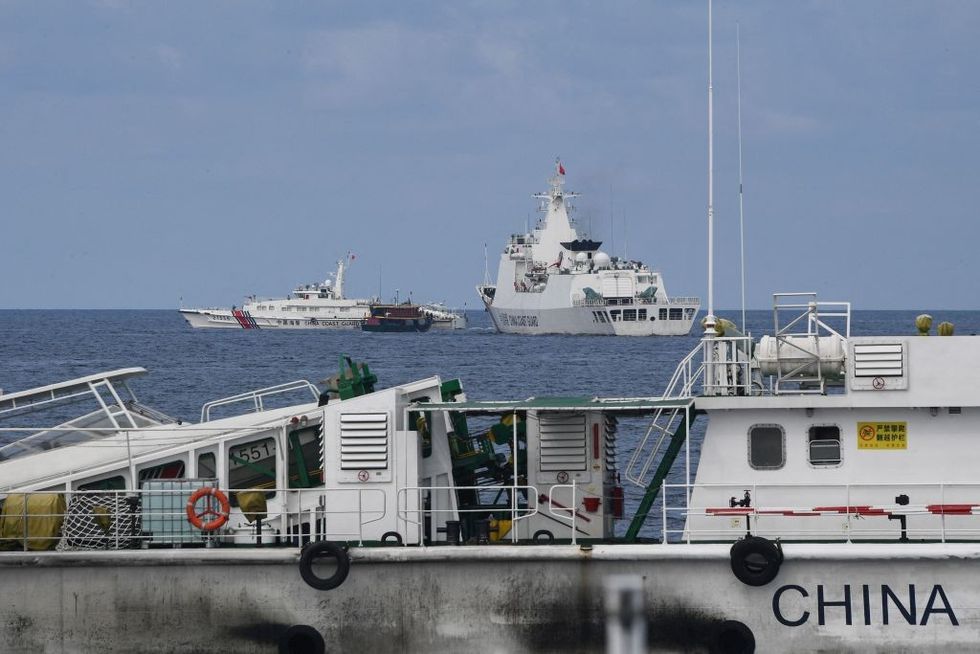'Beijing’s South China Sea expansion must be countered now – before it’s too late,' write James E. Fanell and Bradley A. Thayer

'Beijing’s South China Sea expansion must be countered now – before it’s too late,’ writes
|Reuters
'The CCP intends to deny the sea to the world,' write James E. Fanell and Bradley A. Thayer
Don't Miss
Most Read
While the world’s attention is focused on territorial changes in Ukraine, the world must also realise that the People’s Republic of China (PRC) considers the sea as territory to be conquered, and is doing so in real-time.
The Chinese Communist Party’s (CCP) maritime ambitions have for the past quarter century been implemented by building the People’s Liberation Army Navy (Plan), now the world’s largest. Beyond the warships, submarines and maritime aircraft that are designed to gain sea control, the CCP also intends to deny the sea to the world, specifically by monitoring and cutting undersea cables around Taiwan.
The proof of this intention can be found in a number of examples. First and foremost, was the February 2023 cutting of the only two internet cables to the island of Matsu by two Chinese fishing and container ships. Then there are the actions of the Chinese firm SB Submarine Systems, which maintains undersea cables in the Pacific that are suspected of operations in the South China Sea (SCS). Or the example of the Hong Kong-registered feeder container ship Newnew Polar Bear, which in October 2023 was strongly suspected of damaging the natural gas pipeline, Balticconnector, and telecommunications cable between Estonia and Finland.
In addition to undersea cables, the PRC also includes a long, persistent belligerency against the Republic of the Philippines. As a result of the harassment campaign, Manila said this week that it will increase its maritime patrols in the South China Sea. The Philippines states that it will expand its efforts to protect its sovereignty from the PRC’s aggression against the reefs, shoals, and islands in its Exclusive Economic Zone (EEZ) in the SCS, now more commonly referred to as the West Philippine Sea by those who understand the threat from Beijing. Manila now assesses that the CCP is embarking on a new round of building new artificial reefs within the Philippines EEZ. This expansion of the PRC's physical control into the South and East China Seas has been underway for the last decade and appears to be surging to another new plateau—in real-time.
MORE LIKE THIS:
Chinese Coast Guard attack Philippino ship with water canons
| GB NewsAfter the incompetence and malpractice of the Obama administration in surrendering our Philippine ally's sovereign territory at Scarborough Shoal in 2012, the CCP doubled down on their aggression and built seven artificial islands and military installations, in the Spratly Islands starting in 2013, three of which are the size of Pearl Harbor and equipped with 10,000-foot runways and pier space to equip every ship in the the PLA Navy’s inventory to include their new aircraft carrier and expeditionary strike groups.
Of particular interest right now in the PRC’s renewed aggression are two points at Second Thomas Shoal and Sabrina Shoal, both of which are being surrounded and inhabited by Chinese maritime forces from the coast guard, maritime militia and their vast fishing fleets.
The PRC’s multifaceted expansion in the South China Sea, its belligerence against Japan in the East China Sea, and elsewhere, and increasing aggression against Taiwan demonstrates that the pace and urgency of the PRC’s maritime sovereignty campaign is increasing.
As with almost all aspects of the PRC’s expanding conventional and nuclear might, the seeds of this expansion were laid long ago. While no individual is solely responsible, some are indispensable. In the case of the People’s Liberation Army Navy (PLAN) Admiral Liu Huaqing and Admiral Wu Shengli are paramount.
MORE AGENDA-SETTING OPINION: Tensions in the South China Sea have soared in recent years | GETTY
Tensions in the South China Sea have soared in recent years | GETTYLiu became PLAN commander in 1982 and was known as the PRC’s Alfred Thayer Mahan, who was critical in the expansion of the US Navy or Sergei Gorshkov, who was for the Soviets. Liu had a strategy to make the PLAN a “blue water” navy capable of competing with the US and received strong support from PRC leaders Deng Xiaoping and Jiang Zemin in the 1980s and 1990s. Liu’s strategic vision was for the PLAN to become a force to rival the US Navy in pursuit of the PRC’s global ambitions. That was a pipe dream in the 1980s. Yet, his vision was realised. The year-after-year expansion of PLAN and, more broadly, all PRC military capabilities, has yielded that result.
Admiral Wu Shengli, known as the modern father of the Chinese Navy, took command in 2007 and served for an unprecedented 11 years. He directed the creation of the world’s largest Navy that today dominates the First and Second Island Chains. As a result of Admiral Wu’s leadership, the PLAN today rivals the US Navy in almost every respect.
Moreover, with the appointment of the former commander of the PLAN, Admiral Dong Jun, as the PRC’s 14th Minister of Defense, China’s shift from being a continental nation and transforming itself into being a true, maritime nation is going to be finally realised. As such, we will see the PLAN move from just regional domination to global power projection capabilities. Most importantly, the CCP today is advancing the concept of the “sea as territory,” that is, the PRC’s sovereign territory which has fueled expansionism into the East and South China Seas, but will not be global.
It is essential that we in the West understand what is meant by the “sea as territory”, or even as clear as “the sea is a war zone”. This idea is the rejection of Westphalian conceptions of sovereignty and of international law. In principle, this thesis asserts that the PRC can conquer the sea as it does on land and that these seas are sovereign PRC “territory”, and so no state has a legitimate right to defend them without great risk from the PLAN. This is a radical, unilateral, and dangerous rejection of established maritime law and international norms and practices regarding Freedom of Navigation. It is how the PRC is treating the maritime domain in their quest to achieve the Great Rejuvenation of China.
Most importantly, it permits Americans and Britons to understand the hyper-aggression of the PRC and why the risk of war between the PRC and the US and its allies, notably Japan and the Philippines, and partners, like Taiwan, is increasing and will not stay confined to the Indo-Pacific. The PRC’s inexorable expansion has reached the point where it must be checked and rolled back.
James E. Fanell and Bradley A. Thayer are authors of Embracing Communist China: America’s Greatest Strategic Failure.










